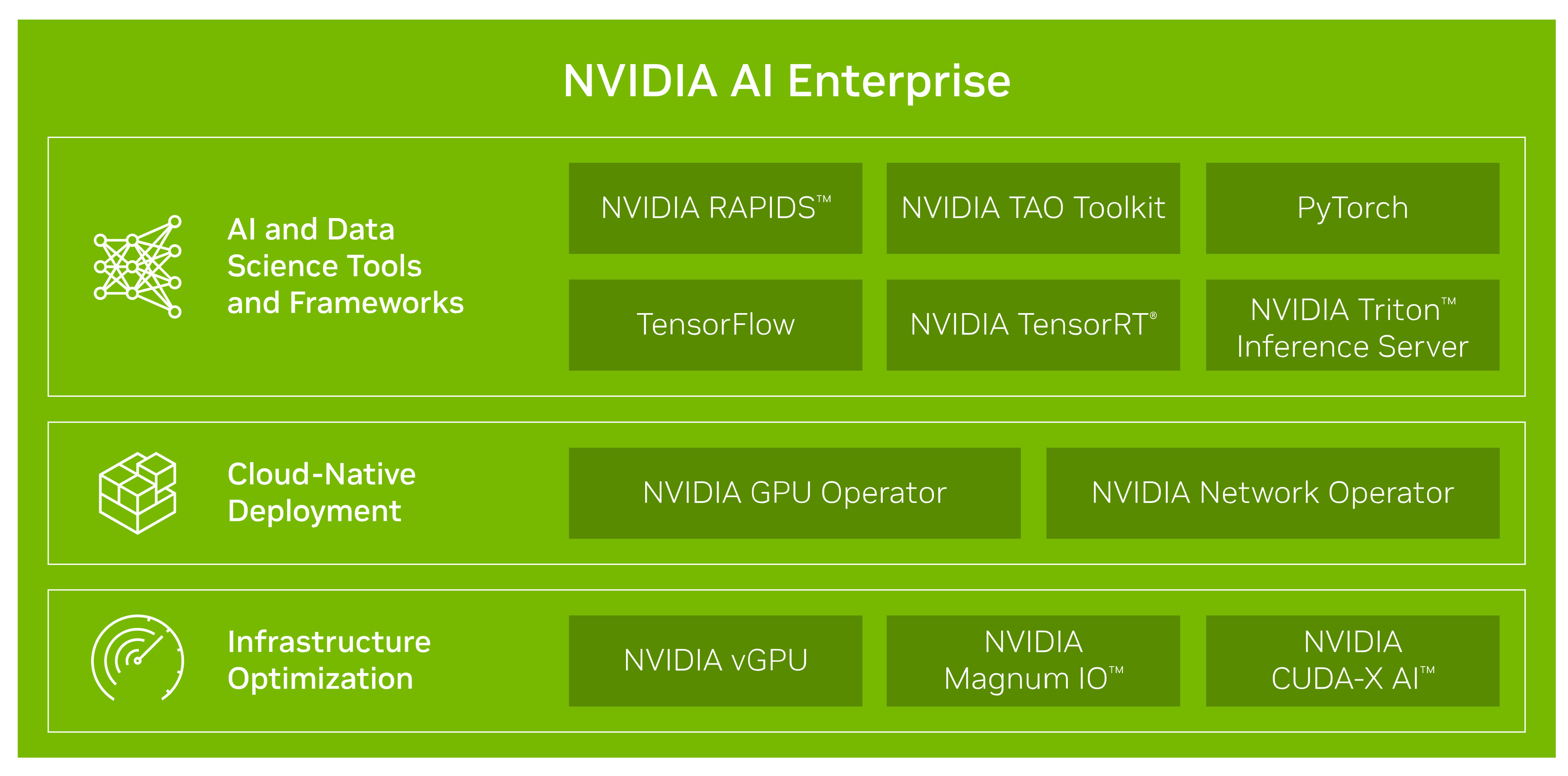
Introduction
It’s our pleasure to delve into the intriguing topic related to Nvidia: The AI and Gaming Solution That’s Leading the Way. Let’s weave interesting information and offer fresh perspectives to the readers.
Table of Content
- 1 Introduction
- 2 The Rise of Nvidia: From Graphics Cards to AI Domination
- 2.1 Nvidia’s Dominance in the Gaming World
- 2.1.1 The Impact of Ray Tracing and DLSS
- 2.2 Nvidia’s Conquest of the AI Landscape
- 2.2.2 The Power of CUDA and its Applications
- 2.2.2.1 The Role of Nvidia in Deep Learning
- 2.3 Nvidia’s Ecosystem and Future Outlook
- 2.3.3 Nvidia’s Strategic Partnerships
- 2.3.3.2 The Metaverse and Nvidia’s Role
- 3 Addressing Counterarguments and Limitations
- 3.4 The High Cost of Nvidia Products
- 4 Conclusion
- 5 Frequently Asked Questions (FAQs)
- 6 Closure
Nvidia: The AI and Gaming Solution That’s Leading the Way
The Rise of Nvidia: From Graphics Cards to AI Domination
Remember the days when choosing a graphics card meant picking between a few brands, each offering incremental improvements? Those days are long gone. Nvidia, once a player in the competitive graphics card market, has ascended to a position of near-unrivaled dominance, fueled by its groundbreaking work in artificial intelligence (AI) and its continued innovation in gaming technology. This isn’t just about faster frame rates and prettier textures; it’s about a company fundamentally reshaping how we interact with technology, from playing video games to developing cutting-edge AI applications. It’s a story of strategic vision, relentless innovation, and a shrewd understanding of the market’s future needs. Think of it like this: Nvidia wasn’t just building faster cars; they were designing the entire highway system, and everyone else is now trying to catch up. We’ll explore the key factors driving Nvidia’s success, examining its impact on both the gaming and AI landscapes, and ultimately, considering the implications of its continued growth. This isn’t just a tech story; it’s a story about the future of computing itself.
Nvidia’s Dominance in the Gaming World
Nvidia’s GeForce RTX series of graphics cards has redefined what’s possible in gaming. Features like ray tracing, which simulates realistic light and shadow interactions, and DLSS (Deep Learning Super Sampling), which uses AI to upscale lower-resolution images to higher resolutions with stunning clarity, have set a new standard for visual fidelity. But it’s not just about raw power; it’s about a complete ecosystem. Nvidia’s GeForce Experience software provides seamless game optimization, driver updates, and even in-game recording and streaming capabilities. This integrated approach has solidified Nvidia’s position as the preferred choice for gamers worldwide. Think about the last time you built a PC or bought a gaming laptop; chances are, you considered an Nvidia GPU first. Why? Because they’ve consistently delivered superior performance, coupled with a user-friendly experience. The consistent updates and improvements keep users engaged and loyal, creating a network effect that’s difficult for competitors to overcome. This isn’t just about hardware; it’s about building a brand that gamers trust and rely on.
The Impact of Ray Tracing and DLSS
Ray tracing and DLSS are not mere buzzwords; they represent a significant leap forward in gaming technology. Ray tracing, by accurately simulating the physics of light, creates incredibly realistic visuals, immersing players in richer, more believable game worlds. DLSS, on the other hand, uses the power of AI to enhance performance without sacrificing visual quality. This is a crucial innovation, allowing gamers with less powerful hardware to enjoy high-resolution gameplay. It’s like having a magic wand that transforms a standard image into a masterpiece. The combination of these two technologies has not only improved the visual quality of games but also broadened the accessibility of high-fidelity gaming to a wider audience. This strategic move has cemented Nvidia’s position at the forefront of gaming innovation. Think about the difference between watching a film in standard definition versus 4K HDR; that’s the leap Nvidia has facilitated in gaming.
Nvidia’s Conquest of the AI Landscape
While Nvidia’s gaming prowess is undeniable, its true transformative power lies in its contributions to the field of artificial intelligence. Nvidia’s CUDA platform, a parallel computing platform and programming model, has become the backbone of many AI applications. This isn’t just about powerful GPUs; it’s about providing the tools and infrastructure that researchers and developers need to build the next generation of AI systems. Nvidia’s GPUs are not just processing graphics; they’re processing massive datasets, training complex neural networks, and driving the advancements in AI that are shaping our world. This is where the real story lies – the quiet revolution happening behind the scenes, powered by Nvidia’s technology.
The Power of CUDA and its Applications
CUDA’s influence extends far beyond gaming. It’s the engine powering self-driving cars, medical imaging analysis, scientific research, and countless other AI-driven applications. It’s like the invisible hand guiding the development of AI, enabling researchers to push the boundaries of what’s possible. The versatility of CUDA is a testament to Nvidia’s forward-thinking approach. They didn’t just create a powerful tool; they created a platform that’s adaptable and scalable, allowing it to meet the ever-evolving needs of the AI community. Consider the advancements in medical imaging: CUDA-powered GPUs are analyzing medical scans with unprecedented speed and accuracy, leading to earlier diagnoses and improved patient outcomes. This is the real impact of Nvidia’s technology – a tangible improvement in people’s lives.
The Role of Nvidia in Deep Learning
Deep learning, a subfield of machine learning, relies heavily on powerful computing resources to train complex neural networks. Nvidia’s GPUs are ideally suited for this task, providing the parallel processing power necessary to handle the massive datasets required for training. This has made Nvidia a crucial partner in the advancement of deep learning, fueling breakthroughs in areas like image recognition, natural language processing, and robotics. Think of it as providing the fuel for the rocket ship of AI advancement. Without Nvidia’s contribution, the progress in deep learning would be significantly hampered. The symbiotic relationship between Nvidia’s hardware and the advancements in deep learning is a testament to the power of collaboration and innovation.
Nvidia’s Ecosystem and Future Outlook
Nvidia’s success isn’t solely attributable to its hardware; it’s also a result of its carefully cultivated ecosystem. From its software development kits (SDKs) to its partnerships with leading technology companies, Nvidia has built a robust network that supports and accelerates the adoption of its technology. This ecosystem fosters innovation, creating a positive feedback loop where advancements in one area drive improvements in others. This isn’t just about selling products; it’s about building a community and fostering collaboration. This holistic approach is what separates Nvidia from its competitors, creating a barrier to entry that is difficult to overcome.
Nvidia’s Strategic Partnerships

Nvidia’s strategic partnerships with major players in the automotive, healthcare, and cloud computing industries have further solidified its position as a leader in the technology landscape. These partnerships provide access to new markets and opportunities, accelerating the adoption of Nvidia’s technology across various sectors. It’s like building a bridge between different worlds, connecting the power of Nvidia’s technology to a wide range of applications. This strategic approach not only expands Nvidia’s market reach but also strengthens its brand image as a reliable and innovative technology partner. Think about the impact on self-driving cars: Nvidia’s technology is powering the AI behind autonomous vehicles, making roads safer and transportation more efficient.
The Metaverse and Nvidia’s Role
The metaverse, a persistent, shared, 3D virtual world, is poised to become a significant technological shift in the coming years. Nvidia’s technology is well-positioned to play a crucial role in the development of the metaverse, providing the computational power necessary to render complex 3D environments and support immersive user experiences. This is a frontier that is still being explored, but Nvidia’s technology is already laying the groundwork for the future of virtual reality and augmented reality. This is not just about gaming; it’s about creating entirely new ways for people to interact and experience the world. Think about the possibilities: virtual collaboration, remote education, and entirely new forms of entertainment. Nvidia is not just a participant; it’s a key architect of this new digital landscape.
Addressing Counterarguments and Limitations
While Nvidia’s dominance is undeniable, it’s important to acknowledge potential counterarguments and limitations. Some critics argue that Nvidia’s pricing is excessively high, making its products inaccessible to some users. Others point to the company’s significant market share as a potential antitrust concern. These are valid concerns that require careful consideration. However, Nvidia’s continued innovation and the high demand for its products suggest that its pricing strategy reflects the value proposition it offers. Furthermore, Nvidia’s continued investment in research and development indicates a commitment to maintaining its technological leadership and addressing potential concerns proactively. It’s a balancing act – maintaining innovation while ensuring accessibility and addressing potential market dominance concerns.
The High Cost of Nvidia Products
The premium pricing of Nvidia’s products is a recurring criticism. While it’s true that Nvidia’s GPUs and other products are often more expensive than those offered by competitors, this premium pricing reflects the advanced technology and superior performance they deliver. The value proposition lies in the enhanced gaming experience, the superior AI processing capabilities, and the overall reliability of Nvidia’s products. It’s a matter of weighing the cost against the benefits. Think of it like buying a luxury car versus a standard car; the luxury car costs more, but it offers a superior driving experience and more advanced features. The same logic applies to Nvidia’s products. The higher cost reflects the superior performance and advanced features.
Conclusion
Nvidia’s journey from a graphics card manufacturer to a leading force in AI and gaming is a compelling testament to the power of innovation, strategic vision, and a relentless pursuit of excellence. The company’s impact extends far beyond the gaming world, shaping the future of artificial intelligence, autonomous vehicles, and the metaverse. While challenges and criticisms remain, Nvidia’s continued investment in research and development, coupled with its strategic partnerships, positions it for continued success in the years to come. The future of computing is inextricably linked to Nvidia’s advancements, and its influence will undoubtedly shape the technological landscape for years to come.
The story of Nvidia is more than just a business success story; it’s a narrative of technological transformation. It’s a reminder that innovation doesn’t happen in a vacuum; it’s driven by a combination of technological breakthroughs, strategic partnerships, and a deep understanding of market needs. Nvidia’s future will be defined not only by its continued dominance in gaming and AI but also by its ability to adapt to the ever-evolving technological landscape and continue to push the boundaries of what’s possible. The road ahead is paved with both opportunity and challenge, and Nvidia’s journey is one we will all be watching with bated breath.
Frequently Asked Questions (FAQs)
- What makes Nvidia’s GPUs superior to its competitors? Nvidia’s GPUs boast superior performance due to advanced architectures, innovative features like ray tracing and DLSS, and a robust software ecosystem.
- How does Nvidia’s technology contribute to AI advancements? Nvidia’s CUDA platform and powerful GPUs are essential for training complex AI models, enabling breakthroughs in deep learning and various AI applications.
- What is the role of Nvidia in the metaverse? Nvidia’s technology is crucial for rendering complex 3D environments and powering immersive experiences in the metaverse.
- What are the potential downsides of Nvidia’s market dominance? Concerns exist regarding high pricing and potential antitrust issues due to Nvidia’s significant market share.
- What is Nvidia’s future outlook? Nvidia is poised for continued success, driven by ongoing innovation in AI, gaming, and other emerging technologies.

Closure
In conclusion, we hope this article has provided valuable insights into Nvidia: The AI and Gaming Solution That’s Leading the Way. We appreciate your readership and engagement. See you in our next article!